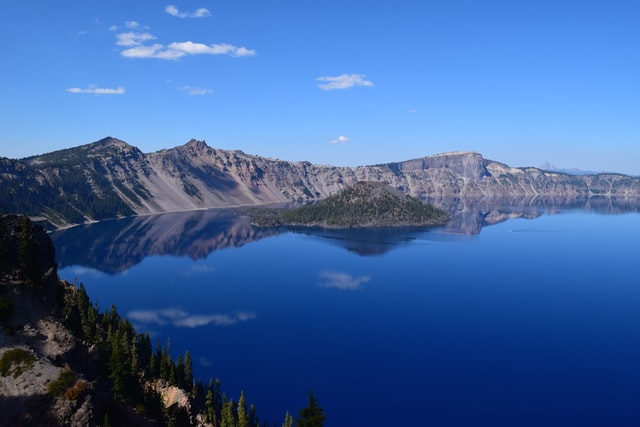A Deep Blue Wonder: Discovering Crater Lake National Park
Located in the southern part of Oregon, Crater Lake National Park is a mesmerizing destination that offers visitors a glimpse into the raw beauty and power of nature. Home to the deepest lake in the United States, the park is a must-visit for anyone seeking adventure, tranquility, and stunning landscapes.
The Origin of Crater Lake
Crater Lake was formed over 7,700 years ago when Mount Mazama, a massive volcano, erupted and subsequently collapsed. The caldera left behind gradually filled with rainwater and snowmelt, creating the pristine, sapphire-blue lake we see today. With a depth of 1,943 feet, Crater Lake is the deepest lake in the United States and the ninth deepest in the world. Its clarity and vibrant blue color are due to the purity of the water, which contains no incoming streams or rivers.
Exploring the Lake
One of the best ways to experience Crater Lake is by taking a boat tour to Wizard Island, a volcanic cinder cone rising out of the lake. The tours offer a unique perspective of the lake’s geology and provide opportunities for hiking and exploring the island’s rugged terrain. Whether you choose to hike to the summit of Wizard Island or simply relax by the shore, the island’s beauty is sure to captivate you.
Scenic Drives and Hikes
Crater Lake National Park is home to some of the most scenic drives and hikes in the Pacific Northwest:
Rim Drive: This 33-mile loop encircles the caldera, offering breathtaking views of the lake from various vantage points. With over 30 scenic pullouts, Rim Drive provides ample opportunities for photography and enjoying the vistas.
Cleetwood Cove Trail: The only trail that leads down to the lake’s shore, Cleetwood Cove Trail is a steep but rewarding hike. Once at the bottom, you can swim in the crystal-clear waters or embark on a boat tour.
Garfield Peak Trail: This moderately challenging hike offers panoramic views of the lake, the surrounding peaks, and the distant Cascade Range. The trail is particularly stunning at sunrise or sunset when the colors of the landscape come alive.
Winter Wonderland
While Crater Lake is a popular summer destination, it also offers a magical winter experience. The park receives an average of 43 feet of snow each year, transforming it into a winter wonderland. Activities such as snowshoeing, cross-country skiing, and sledding are popular among visitors. The serene, snow-covered landscape provides a peaceful escape and a chance to see the park in a different light.
Flora and Fauna
Crater Lake National Park is home to diverse plant and animal life. The park’s forests are dominated by ponderosa pines, lodgepole pines, and mountain hemlocks. During the summer, wildflowers bloom, adding splashes of color to the landscape. Wildlife enthusiasts can spot black bears, mule deer, elk, and a variety of bird species, including the Clark’s nutcracker and the American dipper.
Preservation and Conservation
The park was established in 1902 to protect its unique natural features and ensure that future generations could experience its beauty. Today, Crater Lake National Park continues to focus on conservation and preserving its pristine environment. Visitors are encouraged to practice Leave No Trace principles to help protect the park’s delicate ecosystem.
Planning Your Visit
Crater Lake National Park is open year-round, but the best time to visit is during the summer months when the roads and trails are fully accessible. However, the park’s winter beauty is also worth experiencing for those who enjoy snowy adventures.
For more information on visiting hours, permits, and special events, check out the .
Embark on a journey to Crater Lake National Park and immerse yourself in the unparalleled beauty of this natural wonder. Whether you’re seeking adventure, tranquility, or simply a chance to marvel at nature’s grandeur, Crater Lake promises an unforgettable experience.
